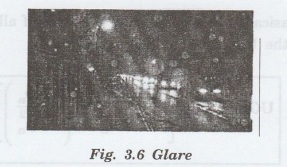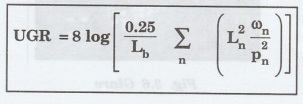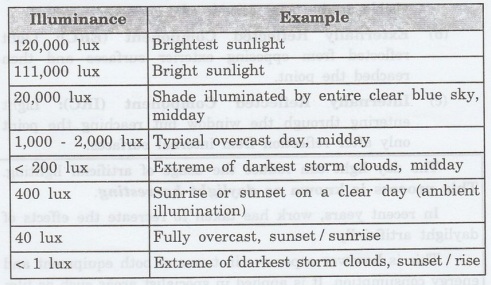Physics For Civil Engineering: Unit III: Acoustics and Lighting Designs
Lighting Designs
Introduction
Visual field glare, colour - daylight calculations - daylight design of windows, measurement of day-light and use of models and artificial skies, principles of artificial lighting, supplementary artificial lighting.
3 (b). Lighting Designs
Visual field glare, colour - daylight calculations - daylight
design of windows, measurement of day-light and use of models and artificial
skies, principles of artificial lighting, supplementary artificial lighting.
VISUAL FIELD GLARE
Glare is difficulty of
seeing in the presence of bright light such as sunlight or artificial light.
Glare is caused by a significant ratio of luminance between the
task and the glare source. The angle between task and glare source and eye
adaptation have significant impacts on glare.
Types of Glare and its remedies
The different types of Glare are
1.
Direct Glare
2.
Reflected Glare
3.
Disability Glare
4.
Discomfort Glare and
5. Distract Glare
1. Direct Glare
It
is caused by bright areas, such as luminaires, ceilings and windows that are
directly in the field of view.
Remedy:
The solution for this type of glare is to avoid exposed to bright sources
directly.
2. Reflected Glare
Glare
from specular reflections of high brightness of polished or glossy surfaces and
can result in completely blocked vision is called reflected glare.
Remedy: It can be reduced by using
polarized lenses.
3. Disability Glare
It
is the reduction in visibility caused by intense light sources in the field of
view.
Remedy: The solution for this type of glare
is to fix photochromic lenses.
4. Discomfort Glare
It
occurs due to changing light conditions and can cause squinting, eye fatigue or
may even make eyes water.
Remedy: Photochromic lenses can eliminate
this type of glare.
5. Distract Glare
It
is mainly an annoyance created by light reflecting from the surface of a lens,
or internally reflecting within a spectacle lens.
The kind of glare may cause eye fatigue,
annoyance and distraction. It is also experienced at night around headlights or
street lights.
Remedy: An anti-reflective treatment is
the solution for this problem.
Factors affecting visibility
1.
Reduction of brightness of the scence by constriction of the pupils.
2. Reduction in contrast of the scence
by scattering of the bright light within the eye.
3.
Reduction
in contrast by scattering light by particles in the air. (Fig. 3.6).

4.
Bloom surrounding objects infront of glare.
5. Reduction in contrast by reflection
of bright areas on the surface of a transparent medium (glass, plastic or
water).
When
the sky is reflected in a lake, so that the bottom below or objects in the
water cannot be seen. This is known as veiling glare.
Methods to reduce glare
1.
Sunglasses are often wore to reduce glare. The polarized sunglasses are
designed to reduce glare caused by light.
2.
An anti-reflective coating of an eyeglass reduces the oni glare at night, from
inside lights and computer screens.
3.
Some types of eyeglasses can reduce glare due to the imperfections on the
surface of the eye.
Measurement
of glare
Glare
is typically measured with luminance meter or luminance camera. Both are able
to determine the luminance of objects within small solid angles. The glare of a
scene ie., visual field of view is then calculated from the luminance data of
that scene.
Unified Glare Rating (UGR)
It
is a measure of the glare in a given environment.
It
is basically the logarithm of the glare of all visible lamps divided by the
background illumination (Lb).

where
log is the common logarithm (base 10).
Lb-background
luminance (cd/m2)
Ln-
luminance of each light source numbered (cd/m2)
ωn
- solid angle of the light source seen from the observer
(sr)
Pn
- Guth position index, which depends on the distance from the line of sight of
the viewer.
Daylight
Definition
Daylight
is the combination of all direct and indirect sunlight during the day time.
This includes direct sunlight, diffuse sky radiation.
Daytime is the period of time each day
when daylight occurs.
Day
lighting is lighting an indoor space with openings such as windows and
skylights that allow daylight into the building. This type of lighting is
chosen to save energy and also to avoid over-illumination by artificial light.
Table
3.3
Daylight
intensity in different conditions

Physics For Civil Engineering: Unit III: Acoustics and Lighting Designs : Tag: : Introduction - Lighting Designs
Related Topics
Related Subjects
Physics for Civil Engineering
PH3201 2021 Regulation | 2nd Semester Civil Dept 2021 Regulation
